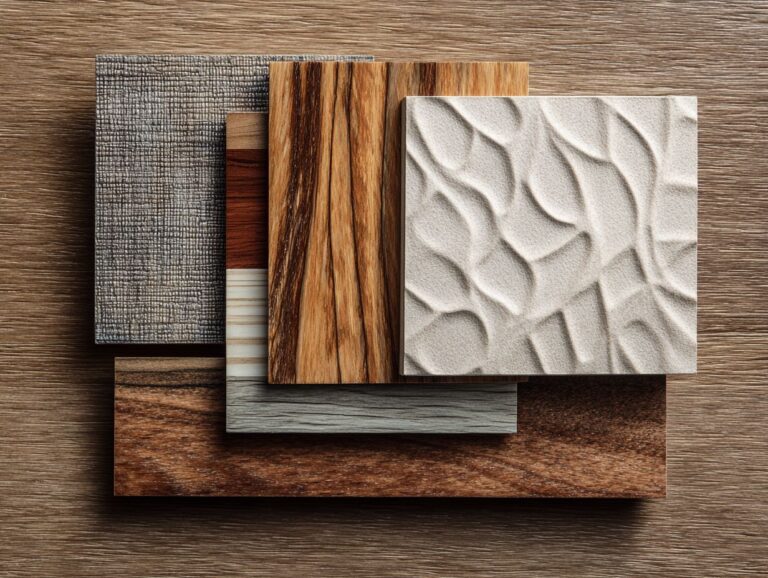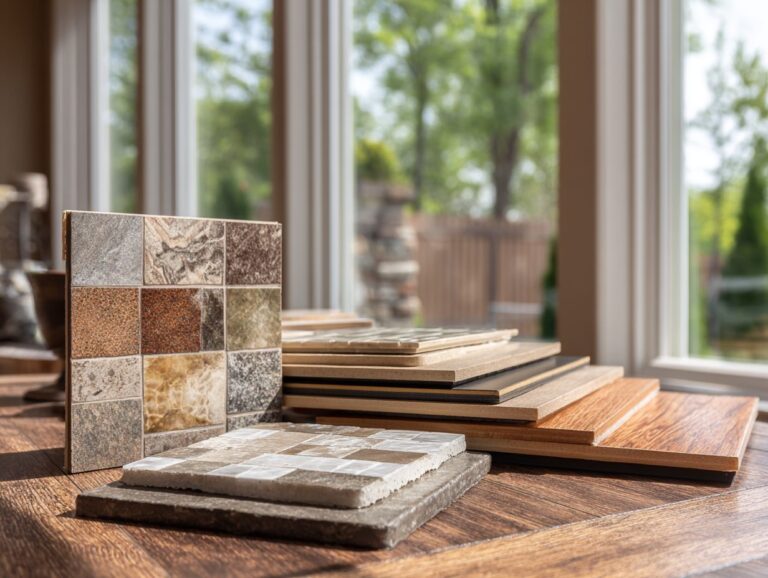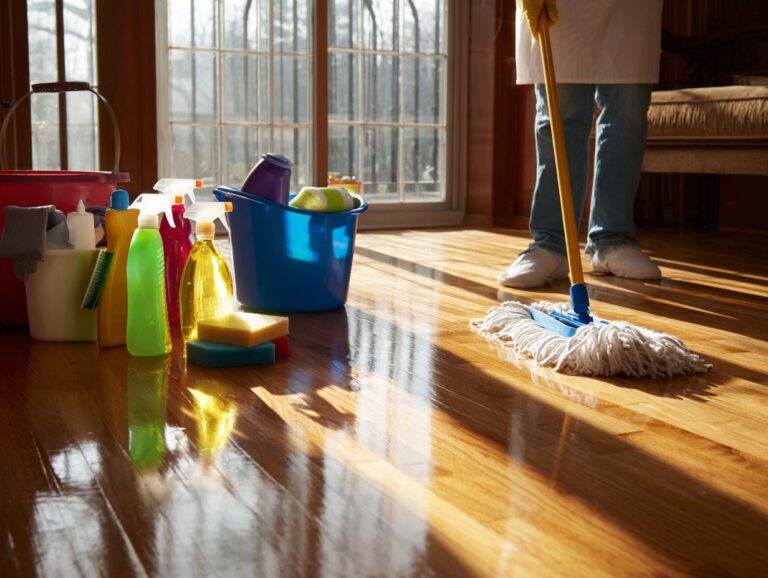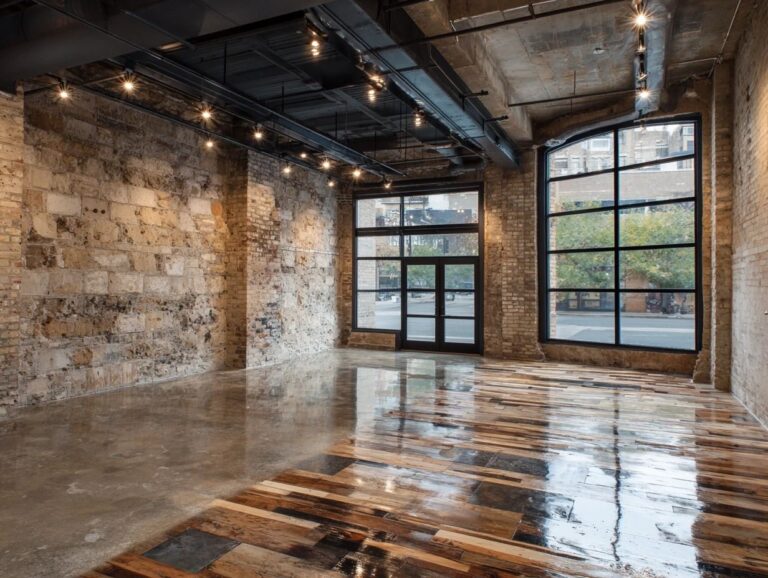Historic Home Flooring – Preservation Guidelines
Contents
- Introduction to Historic Home Flooring
- Knowing About Old Flooring Materials
- Historic Hardwood Floor Preservation
- Assessment of Existing Flooring
- Preservation Techniques
- Replacement and Restoration Options
- Environmental Considerations
- Frequently Asked Questions
- What is considered a historic home flooring?
- What are preservation guidelines for historic home flooring?
- Can I replace my historic home flooring with modern materials?
- What should I do if my historic home flooring is damaged?
- What should you know about taking care of floors in historic homes?
- What are some common types of historic home flooring?
Introduction to Historic Home Flooring
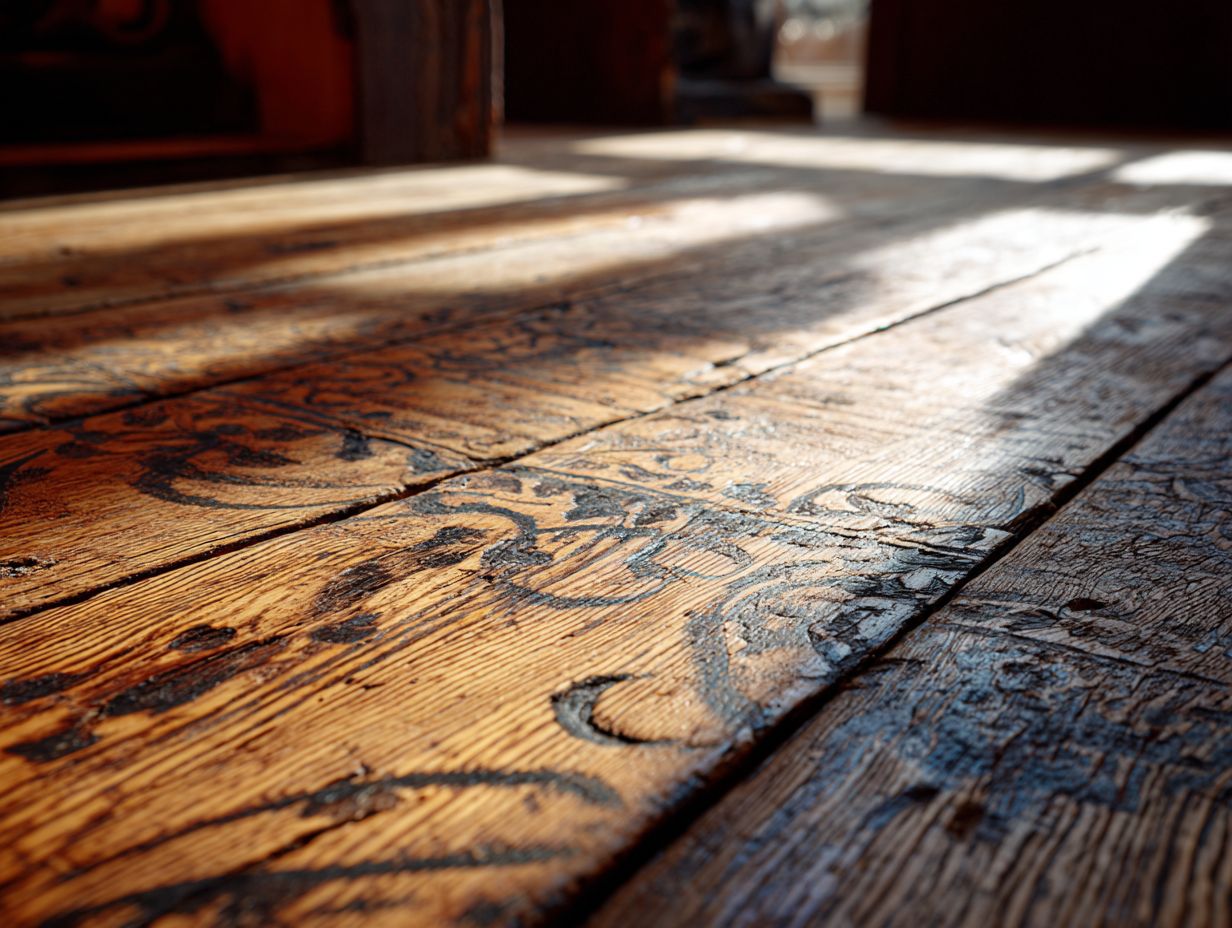
Key Takeaways:
Importance of Preservation
Keeping old flooring in good condition makes it look better and increases the property’s worth, which is important for people interested in preservation.
According to The Secretary of the Interior’s standards, authentic restoration involves using original materials and techniques. For instance, if a property features 19th-century hardwood, refinishing instead of replacing it can uphold its historical integrity.
This method appeals to buyers interested in conservation and helps improve the property’s appeal. By retaining original elements, properties often appreciate in value due to their uniqueness and cultural significance. For an extensive analysis of this trend, our comprehensive study on historic floor restoration explores how preserving character can enhance property value.
Properties that honor their flooring history tend to endure longer within the community, cementing their role as anchors of local heritage.
Overview of Common Flooring Types
Historic homes usually have different types of flooring like hardwood, tile, and natural stone, each showing the unique skill and historical background of its time.
For example, Victorian homes often have detailed hardwood floors with complex patterns, which can be difficult to restore without damaging their detailed designs.
Alternatively, Craftsman-style homes usually have sturdy wooden floors that look worn and require careful sanding to maintain their classic appearance.
When restoring these floors, utilizing specialized products like Bona’s wood floor cleaner and Refinish can help preserve their character and longevity.
Talking with a specialist in home design can help make sure repairs look like the original.
Knowing About Old Flooring Materials
Knowing the different materials in old flooring helps in deciding on preservation and restoration projects.
Wood Flooring
Wood flooring remains one of the most sought-after materials for historic homes, providing both aesthetic appeal and warmth.
Among the most popular hardwoods for flooring are oak, known for its durability and rich grain, and maple, which offers a lighter, contemporary look.
In the past, these woods were appreciated for their beauty and their abundance in North America.
To keep your hardwood floors looking great and in good shape, consider applying a water-based polyurethane coating every 3-5 years. This type of finish dries fast and has a low smell.
Refinishing your floors every 10-15 years can remove scratches and restore their original shine, making your floors look great and enhancing the look of your home.
Historic Hardwood Floor Preservation
Historic Hardwood Floor Preservation
Preservation Challenges and Techniques: Preservation Techniques
The data on Historic Hardwood Floor Preservation explains important methods and issues important for keeping the quality and look of old hardwood floors. Preserving these floors requires a delicate balance between environmental conditions and regular maintenance.
Preservation Techniques delineate essential measures. Maintaining an ideal relative humidity range of 45% is critical as it helps prevent the wood from expanding or contracting excessively. Fluctuations outside this range can lead to warping, cracking, or gaps in the flooring. Hence, using humidifiers or dehumidifiers might be necessary, especially in regions with extreme weather conditions.
The recommended cleaning frequency is once a month to keep the floors clean while avoiding harm from cleaning too often. Gentle cleaning solutions and techniques must be used to avoid stripping the wood of its natural oils and finish. Frequent cleaning keeps the floor looking good and helps it last longer by stopping dirt and grime from collecting, which can harm the wood over time.
- Environmental Control: Keeping humidity stable is important for preservation.
- Regular Maintenance: Monthly cleaning using appropriate, non-abrasive methods helps maintain the floor’s condition and appearance.
This data emphasizes the significance of adhering to specific humidity levels and maintenance routines to preserve historic hardwood floors effectively. Keeping the right conditions and regular cleaning will help keep these floors strong and attractive for years to come.
Tile Flooring
Tile flooring is commonly used in kitchens and bathrooms and features detailed patterns that emphasize the design history of old homes.
Common tile types include:
- Ceramic, valued for its durability and moisture resistance
- Terra cotta, known for its earthy charm and rustic appeal
When maintaining these tiles, regularly clean with a pH-neutral cleaner to preserve their finish.
To restore, use real materials. For example, when fixing terra cotta, choose natural adhesives so the material can breathe. This method keeps the structure strong and the look of the original design intact.
Natural Stone Flooring
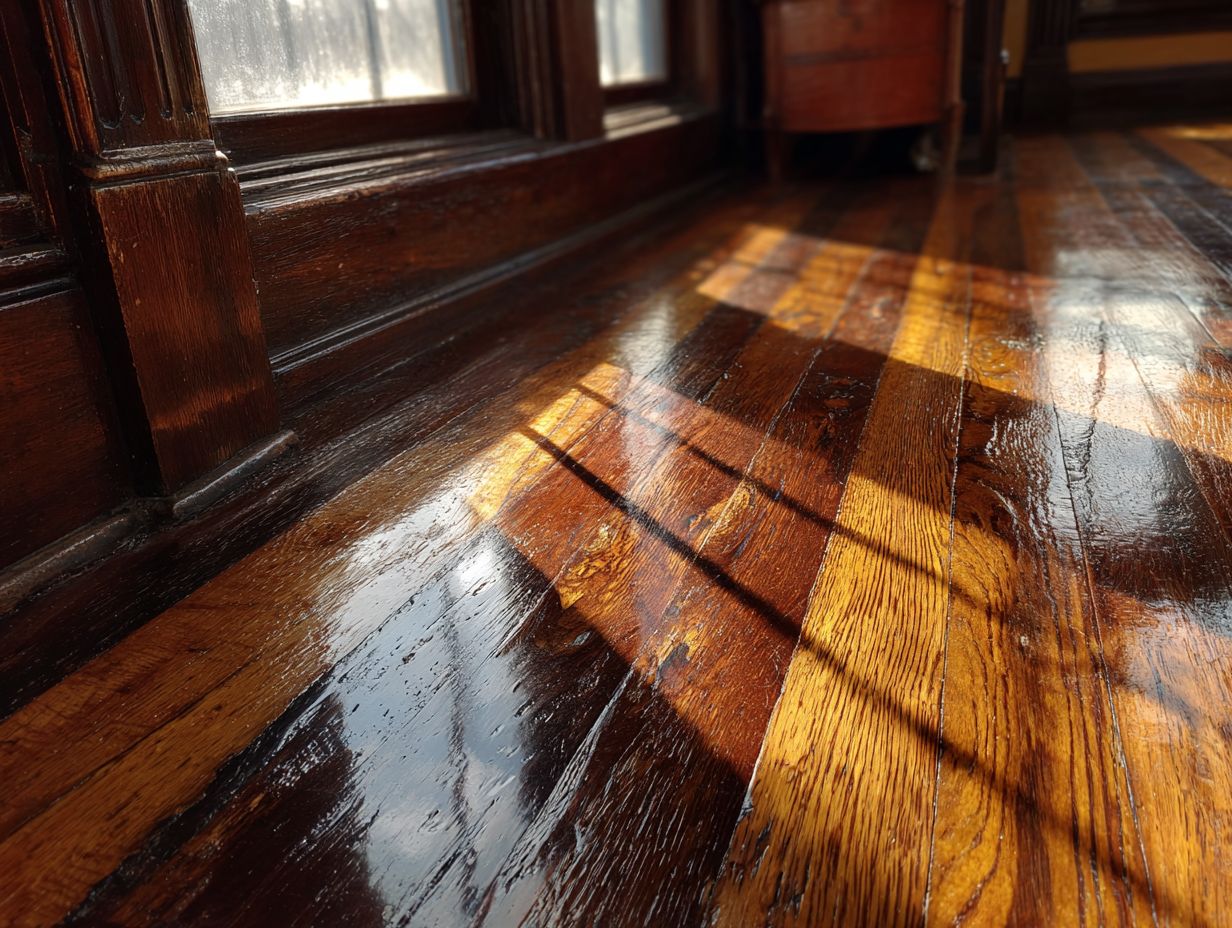
Natural stone flooring offers unmatched durability and elegance, often seen in grand entryways of historic properties.
Among the most popular types are slate, known for its rugged texture and slip resistance, and marble, prized for its classic beauty. Historically, slate has been used in castles, while marble graced the floors of ancient temples.
To support responsible sourcing, choose companies that use ethical mining practices and take steps to repair the environment. This might involve using recycled materials or supporting local wildlife and plants.
To protect your stone, use cleaners that are pH-neutral and apply a deep sealer every few years. This helps prevent stains and wear, keeping your flooring looking great for a long time.
Carpet and Rugs
Carpets and rugs can add warmth and comfort to historic homes while also serving as significant decorative elements.
Persian and Axminster carpets are famous for their detailed patterns and high-quality craftsmanship found in historic buildings. When restoring these pieces, assess their condition first.
For minor repairs, consider DIY patching kits, which are often available online. For extensive damage, consult specialized restorers, like those found through the International Institute for Conservation’s directory.
Sourcing authentic replacements can involve visiting estate sales, specialty shops, or auction houses. Always prioritize carpets made from natural fibers to maintain historical integrity, as synthetic materials can detract from the home’s authenticity.
Assessment of Existing Flooring
Checking the current flooring is important to decide on the best way to preserve it and keep the property’s history intact.
Identifying Original Materials
Locating the original materials is the first step in preserving the historical features of a property, ensuring that any fixes keep its craftsmanship.
- Begin by examining moldings and floorboards closely for unique characteristics, such as width and grain patterns. A magnifying glass can help reveal details often overlooked.
- Consult historical documentation like blueprints or photographs that may detail the original finishes. Websites and digital archives, such as local historical societies, can provide context and verify material types.
- Speaking with professionals in historic preservation can give helpful advice to make sure your restoration matches the property’s history.
Evaluating Condition
Evaluating the condition of flooring helps to decide whether restoration or replacement is necessary for preserving the home’s integrity.
- Start by inspecting for visible wear, such as scratches or warped boards.
- Next, check for pests; look for droppings or signs of an infestation.
Check the humidity with a moisture meter and look over the support beams for any damage to keep the structure safe. You can write down these results to help with your choices.
To thoroughly check your floors, think about hiring a professional inspector. They can give you a detailed report to help you avoid expensive errors and make sure you get a complete assessment.
Documenting Historical Significance
Documenting the historical significance of flooring components adds value to preservation efforts and aids in potential grants and restorations.
- One effective method is to create a detailed inventory of flooring types, including photographs, descriptions, and their historical context.
- Use local archives to find images and documents that display the history of flooring over time. The National Register of Historic Places can show you significant architectural styles in your region.
- Working with local historians can give useful information and improve your documentation. Having a clear and organized database of your results can simplify further research and funding applications, showing the full significance of the flooring.
Preservation Techniques
Using proper preservation methods can greatly increase the lifespan of historic flooring while keeping its visual charm.
Cleaning and Maintenance
Regular cleaning and maintenance of historic flooring can prevent extensive wear and tear, ensuring longevity and visual appeal.
For wood floors, use a mixture of vinegar and water for a gentle clean, applying it sparingly to avoid damage. Using Pledge or a similar wood cleaner can add shine and protect the surface.
For stone flooring, pH-neutral cleaners are essential to maintain the surface integrity; avoid acidic solutions like vinegar.
Regular sweeping and mopping, ideally biweekly, help prevent debris accumulation. Set up a cleaning schedule, like the first Saturday of each month, to keep floors in excellent shape and maintain their value for a long time.
Repairing Damaged Flooring

Fixing damage in old floors quickly can stop more damage and keep the building in good condition.
Start by assessing the damage to determine the best repair technique.
For surface scratches, sanding the affected area can restore the finish; this typically costs around $50-$150 for DIY supplies or $200-$500 for professional services. Curious about the tools and steps involved? Check out our analysis on DIY Floor Refinishing to ensure you’re fully prepared.
If planks are warped or cracked, replacing damaged sections might be necessary, with materials costing $3-$10 per square foot.
You can use wood fillers for minor imperfections, priced at $10-$30, to create a smooth surface.
Selecting the right repair method for the level of damage helps keep your flooring’s look and lifespan intact.
Refinishing Wood Floors
Refinishing wood floors can bring back their original beauty, but choosing the right finish is important to keep a historic appearance.
When choosing a finish, consider oil-based and water-based options. Oil-based finishes provide a rich color and durability, ideal for high-traffic areas, but take longer to dry and have stronger odors.
Water-based finishes dry quickly, can be applied again shortly after, and emit less odor, making them a suitable option for homes with children or pets.
For the refinishing process, start by sanding the floors to remove old finishes, apply your chosen finish per the manufacturer’s instructions, and allow adequate drying time. Bringing in an expert can improve outcomes and reduce time spent.
Replacement and Restoration Options
Deciding if you should replace or fix historic flooring is an important choice that affects how you plan to preserve the building.
When to Replace vs. Repair
Knowing when to replace flooring versus repairing it can save costs while maintaining the home’s historic character.
-
Start by evaluating the extent of damage. For minor scratches or dents on hardwood, refinishing can restore the surface.
-
If water damage has warped the boards, replacing just the affected sections may suffice, provided you can match the materials.
-
If there is a lot of mold, structural damage, or severe wear, you might need to replace everything entirely to keep it safe and looking good.
For instance, in a case study of a 100-year-old home, homeowners opted to refinish original oak flooring instead of replacing it, preserving its charm at a cost-effective $1,200 versus $7,000 for new flooring.
Finding Authentic Materials
Sourcing authentic materials is essential for successful restoration, ensuring that historical accuracy is upheld throughout the project.
- Start by exploring local salvage yards, which often house reclaimed flooring from older homes.
- Specialty retailers, such as those focusing on historic restorations, can also offer authentic options.
When checking if something is genuine, look for records or history that show its age and where it came from. Get samples to check if they match your current flooring. This helps avoid differences in color or feel.
Partnering with experts in restoration can provide further guidance on sourcing and selection, ensuring a cohesive result.
Hiring Professionals for Restoration
Hiring experienced workers for flooring repair ensures the job is done well and respects historical details.
To find the right specialists, consider these criteria:
- Prioritize professionals with extensive experience working on historic properties.
- Seek references from past clients.
- Verify their credentials and certifications in preservation techniques.
It’s also essential to ask about their methodology for restoring original materials-some may prefer traditional techniques over new ones for authenticity. Pay attention to details; a proficient restorer will be able to discuss the unique aspects of your flooring and provide a clear restoration plan, including timelines and cost estimates.
Environmental Considerations
Knowing about environmental elements is important for keeping historic flooring in good condition, as they affect how long the materials last and how they look. Worth exploring: Biophilic Design and Natural Flooring Materials, which can provide insights into sustainable practices that enhance the longevity and aesthetics of historic flooring.
Impact of Humidity and Temperature
Humidity and temperature fluctuations can significantly affect the condition of flooring, leading to expansion, contraction, and potential damage.
To manage these levels in historic homes, start by using a digital hygrometer to monitor humidity, aiming for a stable range of 30-50%. For temperature, maintain a consistent environment between 60-75 degreesF.
Invest in a programmable thermostat for better control. Consider using dehumidifiers during damp seasons and humidifiers when the air is dry, particularly in winter.
Regularly inspecting insulation and sealing windows can also contribute to more stable conditions, protecting your flooring and overall structure.
Using Sustainable Materials
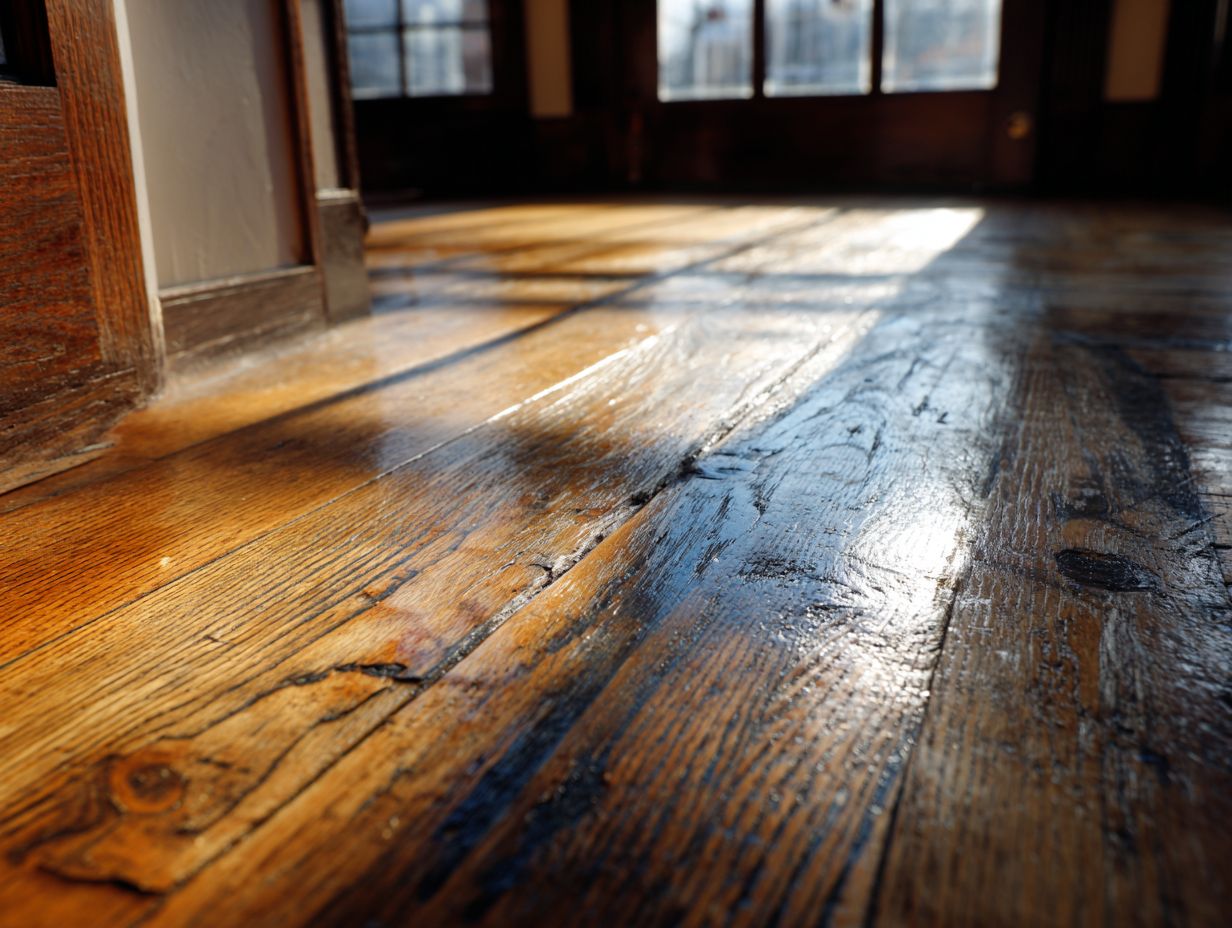
Using sustainable materials in restoration projects can improve environmental sustainability while maintaining the character of historic homes.
A good approach is to use reclaimed wood, which gives a distinct look and lowers the need for new lumber. For example, a project in New England turned old barn wood into beautiful floorboards, bringing both warmth and personality.
To finish the flooring sustainably, consider eco-friendly options like low-VOC or plant-based finishes, which are safer for indoor air quality.
A successful renovation might include using reclaimed wood alongside finishes from brands like AFM Safecoat or Osmo, promoting a healthier environment without compromising style.
Final Thoughts on Preservation
Every action to save old houses helps recognize their unique qualities and past.
Regular maintenance is essential in preserving the integrity of historic flooring. Begin by checking your flooring type; if it’s hardwood, make sure it’s dry and clean to stop it from bending.
Use a gentle cleaner, like a mix of vinegar and water, to avoid harsh chemicals. Consider applying a wood conditioner every few months to maintain its shine.
Engage with local preservation societies, as they offer workshops on restoration techniques, creating a community around shared appreciation for these timeless structures.
Frequently Asked Questions
What is considered a historic home flooring?
A historic home flooring is any flooring that has been in place for a significant period of time, typically 50 years or more, and is a part of the original construction of a historic building.
What are preservation guidelines for historic home flooring?
Preservation guidelines for historic home flooring include maintaining the original materials, avoiding harsh chemicals, and using appropriate cleaning and maintenance techniques.
Can I replace my historic home flooring with modern materials?
No, it is not recommended to replace historic home flooring with modern materials as it can significantly alter the character and value of the historic property. It is best to repair and maintain the original flooring if possible.
What should I do if my historic home flooring is damaged?
If your historic home flooring is damaged, it is important to consult with a preservation specialist to determine the best course of action. In some cases, repairs can be made to maintain the original flooring, while in other cases replacement may be necessary.
What should you know about taking care of floors in historic homes?
Yes, there may be restrictions in place for maintaining historic home flooring, especially if the property is listed on the National Register of Historic Places or located in a historic district. Make sure to contact local preservation officials before altering the flooring.
What are some common types of historic home flooring?
Some common types of historic home flooring include hardwood, terrazzo, linoleum, and tile. These materials were commonly used in historic homes and can be found in various styles and patterns.

